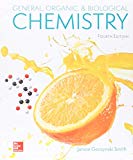
Concept explainers
Write a balanced equation for the combustion of each
(a)
(a)
Interpretation:
The balance equation for the combustion of
Concept Introduction:
Compounds consist of carbon and hydrogen is known as hydrocarbons. Hydrocarbons are classified as saturated hydrocarbon and unsaturated hydrocarbon. Saturated hydrocarbons are those hydrocarbons in which carbon-carbon single bond is present as carbon is linked with four atoms. Unsaturated hydrocarbons are those hydrocarbons in which carbon-carbon multiple bonds are present that is double and triple bond.
Saturated hydrocarbon is known as alkane having general molecular formula
The chemical reaction which involves the reaction of alkane and oxygen, results in the formation of carbon dioxide gas and water vapor is known as combustion reaction. The combustion reaction is an exothermic reaction.
The general reaction of combustion of alkane is:
A reaction is said to be balanced, if the number of atoms of each element on the product side and one the reactant side of a chemical reaction are equal.
Answer to Problem 65P
Explanation of Solution
Saturated hydrocarbon in which carbon-carbon single bond is present is known as alkane.
The general molecular formula of alkane is
The given alkane is
Ethane reacts with oxygen and results in the formation of carbon dioxide gas and water vapor.
The combustion reaction of ethane is written as:
Reactant side Product side
Number of C atoms = 2 Number of C atoms = 1
Number of H atoms = 6 Number of H atoms = 2
Number of O atoms = 2 Number of O atoms = 3
Thus, the above reaction is not balanced. To balance the reaction, multiply 2 with ethane, 7 with oxygen gas, 4 with carbon dioxide gas and 6 with water vapor.
Therefore, the balanced combustion reaction of ethane is written as:
(b)
Interpretation:
The balance equation for the combustion of
Concept Introduction:
Compounds consist of carbon and hydrogen is known as hydrocarbons. Hydrocarbons are classified as saturated hydrocarbon and unsaturated hydrocarbon. Saturated hydrocarbons are those hydrocarbons in which carbon-carbon single bond is present as carbon is linked with four atoms. Unsaturated hydrocarbons are those hydrocarbons in which carbon-carbon multiple bonds are present that is double and triple bond.
Saturated hydrocarbon is known as alkane having general molecular formula
The chemical reaction which involves the reaction of alkane and oxygen, results in the formation of carbon dioxide gas and water vapor is known as combustion reaction. The combustion reaction is an exothermic reaction.
The general reaction of combustion of alkane is:
A reaction is said to be balanced, if the number of atoms of each element on the product side and one the reactant side of a chemical reaction are equal.
Answer to Problem 65P
Explanation of Solution
Saturated hydrocarbon in which carbon-carbon single bond is present is known as alkane.
The general molecular formula of alkane is
The given alkane is
2-methylbutane reacts with oxygen and results in the formation of carbon dioxide gas and water vapor.
The combustion reaction of 2-methylbutane is written as:
Reactant side Product side
Number of C atoms = 5 Number of C atoms = 1
Number of H atoms = 12 Number of H atoms = 2
Number of O atoms = 2 Number of O atoms = 3
Thus, the above reaction is not balanced. To balance the reaction, multiply 8 with oxygen gas, 5 with carbon dioxide gas and 6 with water vapor.
Therefore, the balanced combustion reaction of2-methylbutaneis written as:
Want to see more full solutions like this?
Chapter 12 Solutions
Loose Leaf for General, Organic and Biological Chemistry with Connect 2 Year Access Card
- At a metal-solution interface, an electron is exchanged, and the symmetry factor beta < 0.5 is found in the Butler-Volmer equation. What does this indicate?arrow_forwardTopic: Photochemistry and Photophysics of Supramoleculesarrow_forwardTopic: Photochemistry and Photophysics of Supramoleculesarrow_forward
- How to name hydrocarbonsarrow_forwardPlease do these questions within the SCH4U course please with full steps since I am still unsure how to format my answers! Thank you so much.arrow_forwardWhen two solutions, one of 0.1 M KCl (I) and the other of 0.1 M MCl (II), are brought into contact by a membrane. The cation M cannot cross the membrane. At equilibrium, x moles of K+ will have passed from solution (I) to (II). To maintain the neutrality of the two solutions, x moles of Cl- will also have to pass from I to II. Explain this equality: (0.1 - x)/x = (0.1 + x)/(0.1 - x)arrow_forward
- Calculate the variation in the potential of the Pt/MnO4-, Mn2+ pair with pH, indicating the value of the standard potential. Data: E0 = 1.12.arrow_forwardGiven the cell: Pt l H2(g) l dis X:KCl (sat) l Hg2Cl2(s) l Hg l Pt. Calculate the emf of the cell as a function of pH.arrow_forwardThe decimolar calomel electrode has a potential of 0.3335 V at 25°C compared to the standard hydrogen electrode. If the standard reduction potential of Hg22+ is 0.7973 V and the solubility product of Hg2Cl2 is 1.2x 10-18, find the activity of the chlorine ion at this electrode.Data: R = 8.314 J K-1 mol-1, F = 96485 C mol-1, T = 298.15 K.arrow_forward
 Chemistry: The Molecular ScienceChemistryISBN:9781285199047Author:John W. Moore, Conrad L. StanitskiPublisher:Cengage Learning
Chemistry: The Molecular ScienceChemistryISBN:9781285199047Author:John W. Moore, Conrad L. StanitskiPublisher:Cengage Learning Introductory Chemistry: An Active Learning Approa...ChemistryISBN:9781305079250Author:Mark S. Cracolice, Ed PetersPublisher:Cengage Learning
Introductory Chemistry: An Active Learning Approa...ChemistryISBN:9781305079250Author:Mark S. Cracolice, Ed PetersPublisher:Cengage Learning

